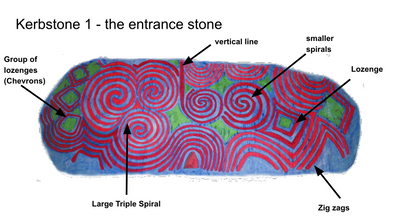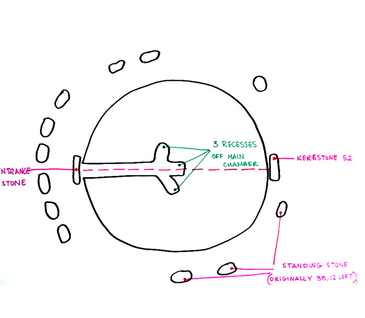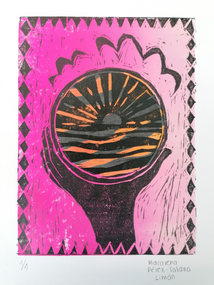
Artist║Designer║Educator
Heading 1
Teaching Practice
Post Primary Education
Post primary school placement is designed to give student teachers an opportunity to gain practice in teaching, to apply educational theory in a variety of teaching and learning situations and to participate in school life in a way that is structured and supported.
St. Michaels College
Ailesbury Road, Dublin 4
St.Michael’s College was founded in 1944 by the Congregation of the Holy Spirit, as a Catholic Junior School for boys. It was extended in 1975 to be a full Secondary School. Today it operates through a partnership of laity and religious. The College authorities promote a collaborative approach to the pursuit of excellence incorporating parents, teachers and students. This approach creates a very positive synergy among all the stakeholders, which has been acknowledged in numerous evaluations carried out by the Department of Education and Science.
Their mission:
To foster the academic, moral, spiritual, social and cultural education of our students in a safe and caring environment, and in an atmosphere of mutual respect. Developing the emotional and physical well-being of our student while ensuring the highest standards of teaching and learning, to enable each student to reach his full potential
Unit of Learning 1
1 Year - Clay Vessels
Theme: Climate Creatures
Aim:
To explore form, texture and colour through the construction of a free standing clay vessel based on the theme “ Climate Creatures”.
Students will create a functioning clay plant pot based on a creature that has been impacted by climate change. Later, students will populate their vessels with pollinator friendly plants to promote biodiversity and contribute to climate action.
Learning Intentions:
-
Explore the theme through written and visual research
-
Promote feelings of wellbeing through the practice of mindful meditation.
-
Develop observation skills through drawing of primary objects.
-
Experiment with design ideas through analytical drawing.
-
Apply their understanding of texture and form to create a final 3D clay vessel based on their designs.
-
Experiment with colour and tone while painting their final clay vessel.
Learning Outcomes:
-
1.1 analyse their work, or that of another, using appropriate vocabulary and knowledge.
-
3.5 experiment with design ideas through research and analytical drawing.
-
1.12 apply their understanding of the art elements and design principles to make an artwork.
-
1.8 discuss examples of historical and contemporary visual artwork
-
3.6 design a final work based on their drawings.



Unit of Learning 2
6 Year - Pre Christian Ireland
Theme: Form, function & construction
Aim:
Investigating pre-Christian Ireland, students will explore the rich art history of the Stone Age through practical and research based tasks. Students will be assessed through questioning reflecting that of the L.C. exam criteria, as well as an in-class exam based on Pre-Christian Ireland .
Learning Intentions:
-
Investigate the social and cultural circumstances that influenced the architecture and artefacts of the Neolithic period in Ireland.
-
Discuss the materials, techniques, structures and designs used to create Newgrange.
-
Illustrate their investigations of Neolithic art and artefacts through detailed annotated drawings.
-
Curate and present their research of Newgrange in the form of an information Poster.
Learning Outcomes:
-
1.1 Looking - Use critical and visual language to describe an artwork
-
1.3 Experimenting and interpretation - produce an annotated visual record of their enquiry
-
2.2 Apply the art elements and design principles in creating and evaluating their work
-
2.4 Curate and present their work in a considered way
-
3.4 Present evidence of a sustained and varied investigation of a stimulus
Rockford Manor Secondary School
Monkstown, Dublin
Unit of Learning 3
5 Year - Lino printing
Theme: Unsung Heroes
Aim: Exploring the theme Unsung Heros, students will produce a 2 colour lino print demonstrating an understanding of line, texture, balance and colour.
Learning Intentions:
-
Respond to the brief through group discussion
-
Explore the theme through written and visual research
-
Develop observation skills through drawing of primary objects
-
Differentiate between various collage techniques ie. mixed media, chine collé
-
Appreciate and understand the importance of lino-cutting safety
-
Explore the printing process to produce an edition of prints
-
Experiment with colour in their choice of inks, paper and mounting board.
Learning Outcomes:
-
1.2 Recording and documenting - record visual information through a variety of media and techniques
-
2.2 Contextual enquiries - apply the art elements and design principles in creating and evaluating their work
-
2.4 Realisation/Presenting - curate and present their work in a considered way
-
3.4 Critical and personal reflection - discuss the development of ideas and work from conception to realisation
Rockford Manor is a non fee-paying Secondary School for girls located in Monkstown, Co. Dublin. The size of the school is unique in its catchment area enabling it to provide education of the highest quality in an intimate and caring environment where there is an emphasis on individuality and personal contact and affirmation.
In the school there is an emphasis on achievement and in this climate of excellence, improvement and success are not only rewarded, but celebrated.
Their mission:
The school fosters a caring, intimate culture with an emphasis on building self-esteem and achieving excellence.This is a relatively small school where friendship, affirmation and individual attention are encouraged among pupils, teachers and parents.



Unit of Learning 4
6 Year LCA - Mixed media & print
Theme: Local Environment
LCA aims:
-
Develop feelings for the natural and built environments.
-
To evolve a teamwork approach to environmental investigation based on direct experience.
-
Develop in students an increased capacity to use artistic processes and to extend their understanding of how artists have responded to the environment and how they have promoted environmental care.
-
Develop the students capacity to respond visually and critically to the environment
-
To encourage students to communicate their ideas and feelings to a wider audience.
Learning Outcomes:
-
Based on group and individual learning methodologies, collect and organise resources and information.
-
Use a variety of artistic approaches.
-
Identify and experiment with artistic visual qualities and with a range of materials and tools.
-
Produce art works of a personally expressive and aesthetic nature.
-
Recognise some of the ways in which artists have responded to, and promoted environmental issues.
-
Begin to have a more participatory role in environmental care.































